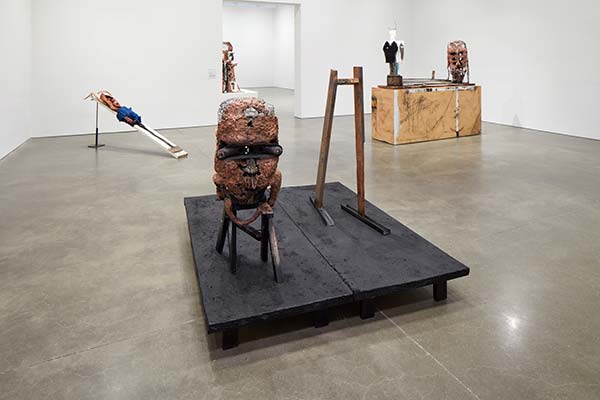Spring 2019 Highlights
By Susan B. Apel, WTP Art Correspondent
Four times a year, WTP art correspondents from around the country will report back on the previous season, with images from exhibitions you otherwise might have missed, and their own insights into these varied venues.
The Hood Museum of Art at Dartmouth College has reopened. After an almost three-year closure for extensive building and renovation of the original Charles Moore–designed structure, this major player in New England’s art world flung its doors open to new spaces, new artists, and a new, more inclusive perspective. To be sure, from the over 65,000 works of art in its collection, the Hood brought back some public favorites like its gypsum Assyrian reliefs and works by Rothko and Picasso, but it aims to change the museum’s narrative by looking beyond traditional European masterpieces. New acquisitions include, for example, Chocktaw-Cherokee sculptor Jeffrey Gibson’s “WHAT DO YOU WANT? WHEN DO YOU WANT IT?” and Alma Thomas’s “Wind Dancing with Spring Flowers.”
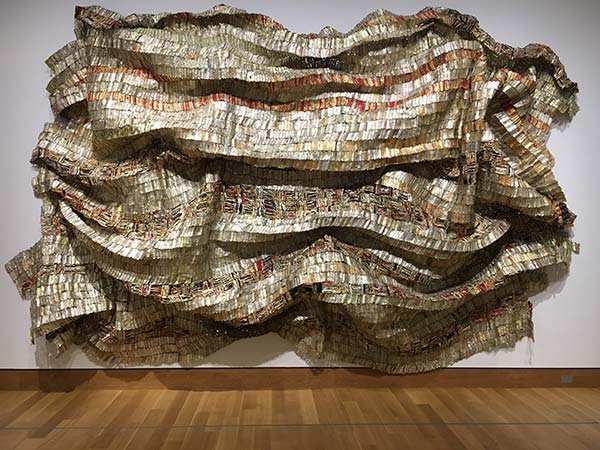
Returned to the Hood’s walls is “Hovor” by Ghanian artist El Anatsui, a monumental work resembling kente cloth, whose gleaming folds appear as casual as if someone had tossed it over a chair. Its undulations seem to embrace the viewer like a majestic shawl. The “cloth,” however, is an illusion. El Anatsui created this work with thousands of shredded and flattened pieces of aluminum liquor bottle caps stitched together with copper wire. Even humble wasted objects can be recycled and brought to beauty. The artist sees the work as a commentary on mass consumption, alcoholism, and other postcolonial effects on the African continent.
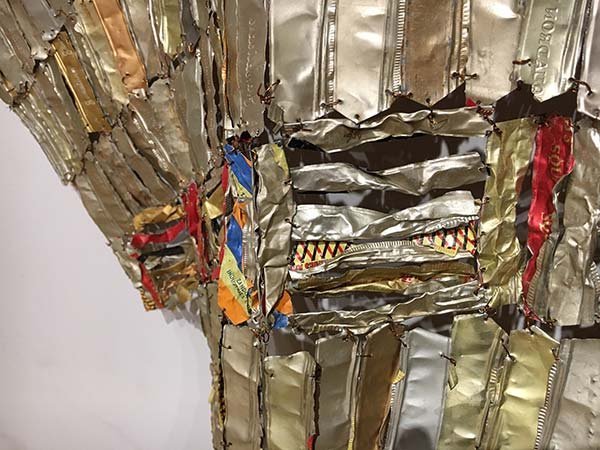
Galleries on polar ends of the Brattleboro Museum and Art Center contrast macro with micro. Artist Sandy Sokoloff claims that after decades in the art world, he “…withdrew… to focus on the work itself.” His Op-Art inflected pieces in a series entitled Emanation evoke religiosity for the artist, although not for this viewer. At a minimum, however, they are meditative and dreamy. Each of these half-dozen large-scale works are constructed with a central, dominating orb flanked by vertical near-rectangular forms. Despite their similarities, the viewer is compelled anew with each individual work in this skillfully displayed series.
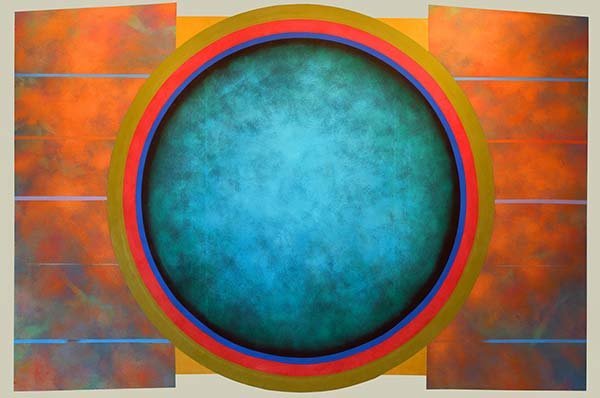
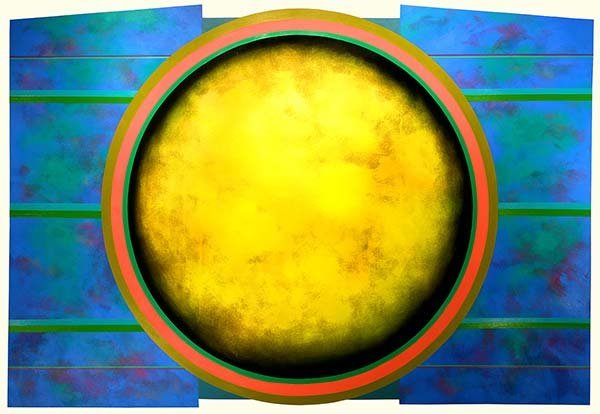
Moving from the expanse of Sokoloff to the intricate paintings of Amy Bennett’s Nuclear Family is to arrive in a Lilliputian universe not of the celestial but of the deeply-rooted mundane. She peers inside a kitchen (“Rubber Gloves”), or frames two figures on a porch and invites the viewer (or voyeur?) to construct a narrative. Bennett’s technique includes building a miniature model of her not-yet-existing painting. She positions and repositions the pieces of the model that in her words “becomes a stage,” which “offers me complete control over lighting, composition and vantage point.” When satisfied with her narrative in 3D form, it serves as her subject for a painting. She re-uses parts of her sets so that rooms and characters might appear in more than a single work, lending the series a neighborhood-like cohesion (much like the stories in Elizabeth’s Strout’s Olive Kitteridge). “Anniversary” is a depiction of a couple on different sides of a wraparound porch. Are they fighting, or just easily familiar?
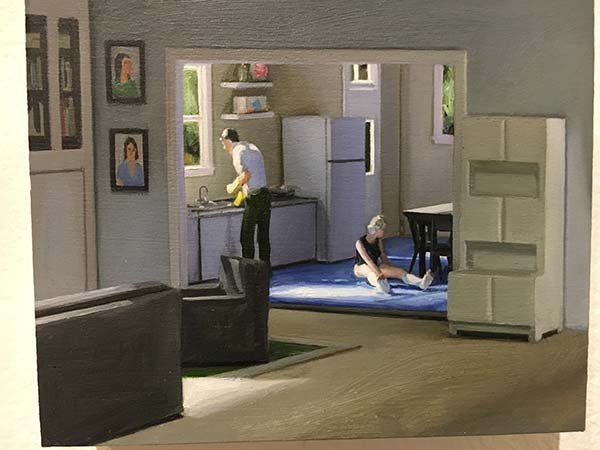
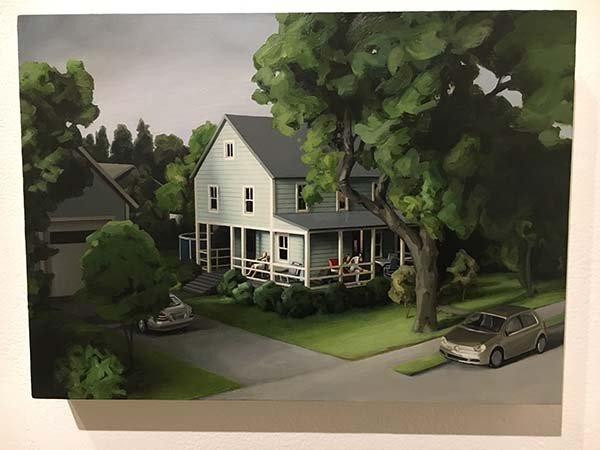
Size matters. And location. For her exhibition Deeper Look at the Massachusetts Museum of Contemporary Art (Mass MoCA), Jenny Holzer took redacted memos, fingerprint cards, and autopsy reports about torture at Abu Ghraib and Guantanamo Bay and blew up the images into oversized posters. In a museum filled with expansive visual images, Holzer believes in the power of words. If you stand in the middle of this gallery and read the walls, you will believe in the power of words too. And you will feel haunted about the unknown, and unknowable, that lie beneath the redactor’s black Sharpie. Even in a country with a Freedom of Information Act (the source of these materials), all information is not free. What secrets remain, and can they possibly be worse than those that see daylight in Holzer’s exhibition?
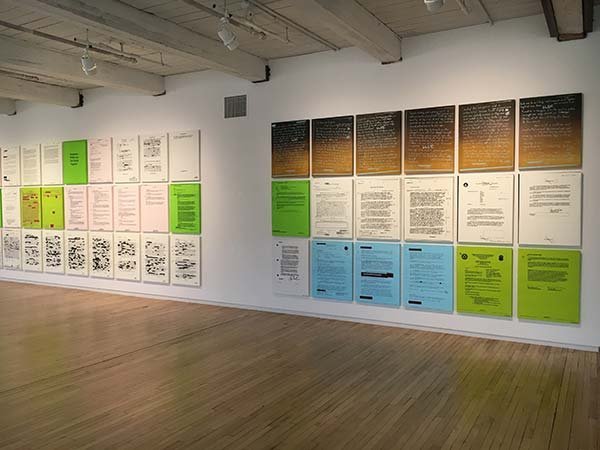
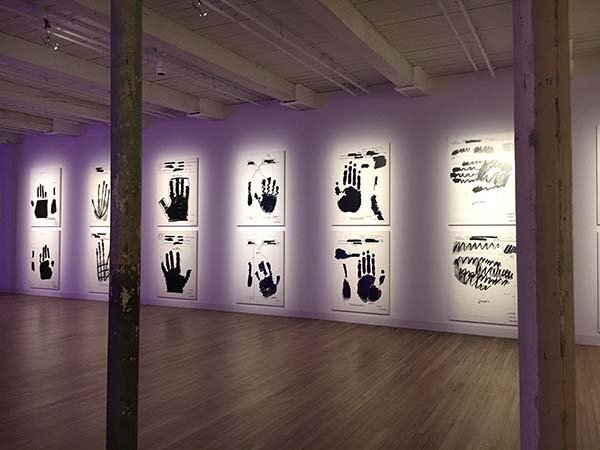
Huma Bhabha is known for, among other things, last year’s rooftop gallery exhibition at the Metropolitan Museum of Art in New York. “Benaam,” one of the two figures from that installation, has traveled as part of a substantial (sixty-two pieces) exhibition of her work, They Live, to Boston’s Institute of Contemporary Art. The rest is a phantasmagoric mix of gods, monsters, and vaguely sci-fi influenced creatures. The first sculpture in the exhibition is “The Orientalist,” a seated figure of indeterminate sex and age, regal in bearing but in a state of decrepitude, evoking Dickens’s Miss Havisham. It provides a good introduction to Bhabha’s techniques and materials: a found chair, some wood, clay, and chicken wire, much of it raw and exposed.
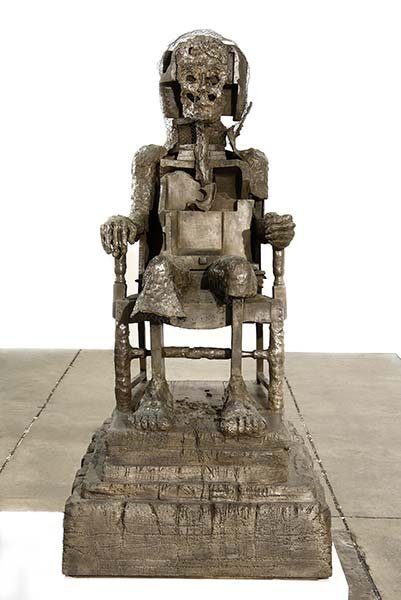
As in her famous “Benaam,” the consequences of war is a common theme for Bhabha. “Bumps in the Road” is a riff on Giacometti’s “Walking Man,” inspired by a term used in the Iraq and Afghanistan wars to describe dead bodies that littered the roadways. A rough plinth holds a dismembered figure, its head and legs walking side by side. As is the case in much of Bhabha’s work, while sobering, it has a cartoonish quality that injects an uncomfortable note of near-humor.
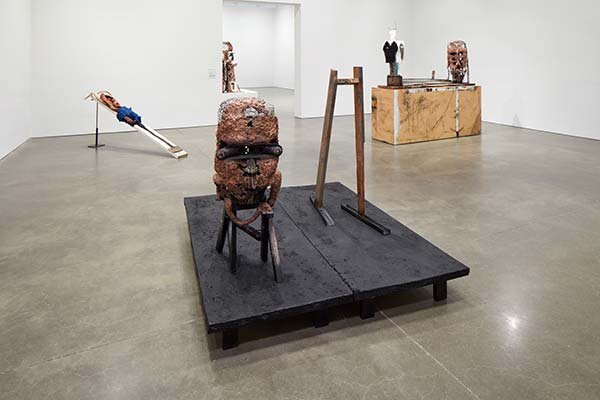
Hasso Ewing’s sculptures formed part of the inaugural, multi-artist exhibition Unbound! at the just-opened Garage Cultural Center in Montpelier, Vermont. Her life-sized women, bathing-capped in the style of years past, are simultaneous hefty and light as air. Pale bodies and white swimming suits appear as apparitions from a near-past generation of women. The sculptures are delicate, somewhat fragile, composed of a wire armature, aluminum foil, and plastic-impregnated gauze. Reminiscent of the works of Eva Hesse, the possibility of their impermanence rests easy with Ewing.
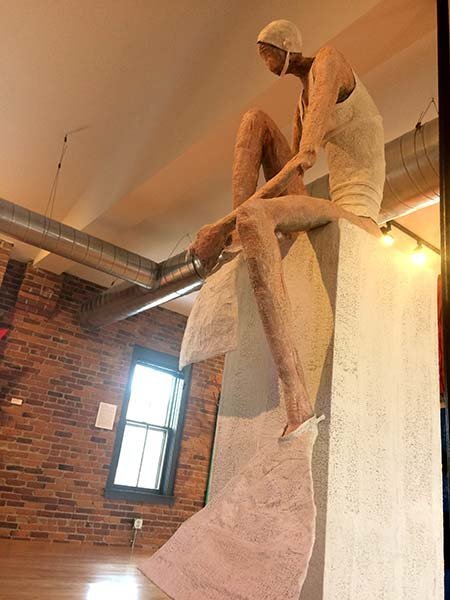
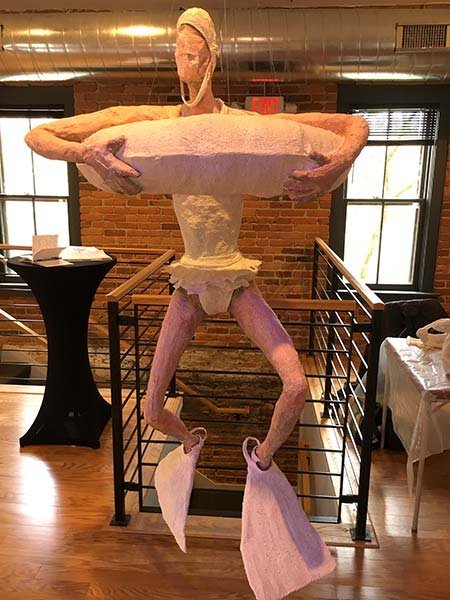
In what could be art capturing Vermont at its most real, artist and curator Michael Zebrowski and the (now defunct) Center for Public Art in Morrisville, Vermont, with artists Erika Senft Miller and Nancy Winship Milliken, decided to turn the staid outdoor sculpture garden at the Vermont Council on the Arts in Montpelier, Vermont, into something more kinetic. Wood for heating homes—what kind, where to get it, how to chop and dry it, what brand of stove to burn it in—is deep in the conversation (literally), culture, and ritual of Vermont. So began SiteTime: Cordwood, an exhibition nearing the end of its two-year run. It began with (what else) an enormous wood pile of a size (four cords) that would heat the average Vermont household for a season. Every few months, performance artists interact with the wood in its next logical evolution. The exhibition began with the creation and settling of the wood pile (“Slumping”) and later moved through “Falling” (separation of the wood into one-cord piles).
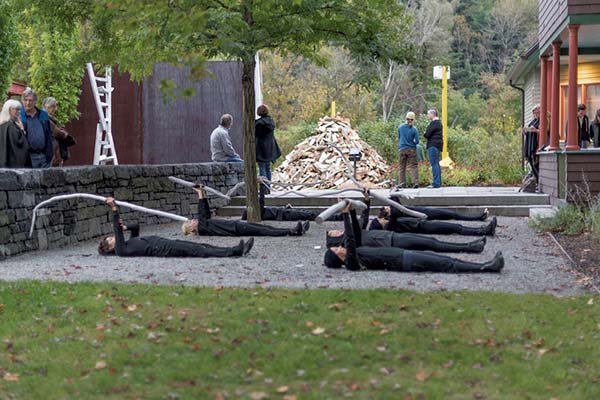
The third and current stage in the exhibition is “Breathing,” cords stacked for drying, the blue representing the color of tagged trees waiting to be cut from the forest. The exhibition ends in August 2019 with its final stage, “Sharing,” in which the wood will be removed from the site and distributed as works of art and/or as a commodity for its intended purpose: heating. SiteTime: Cordwood takes the most humble and quotidian of materials in a Vermont life and not only turns it into art, but in a temporal space that allows it to unfold in its own natural rhythm.
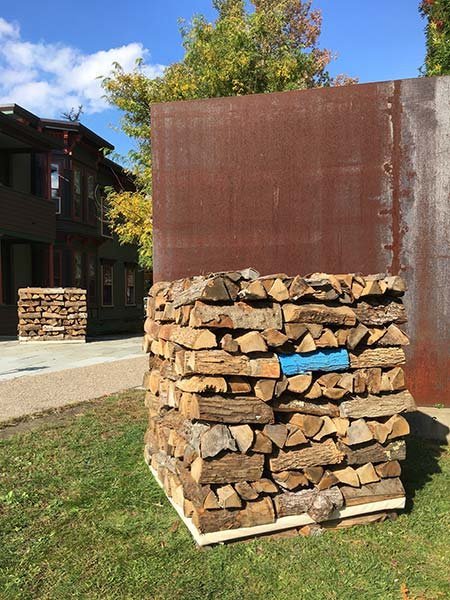
If you are interested in becoming an art correspondent for WTP, please inquire at wtp@thewoventalepress.net
Copyright 2019 Woven Tale Press LLC. All Rights Reserved.

